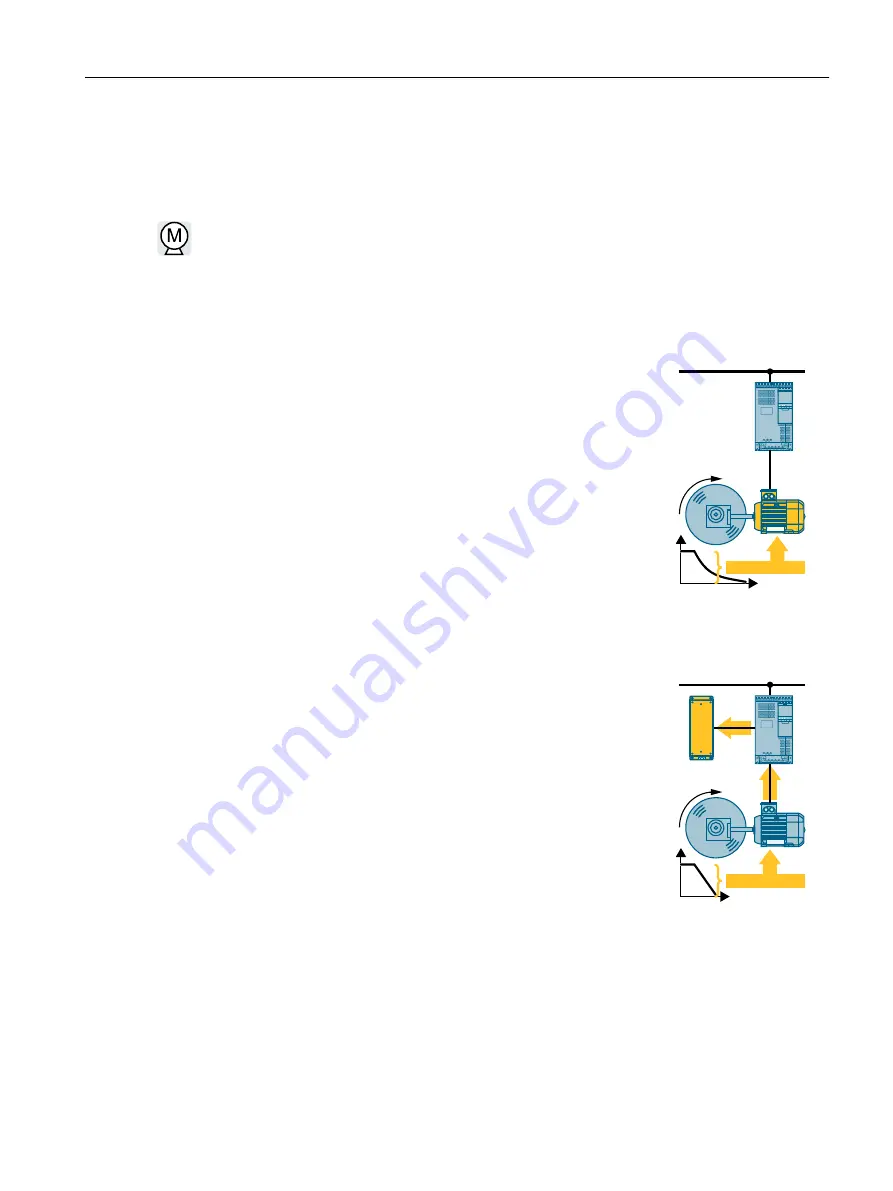
6.20
Electrically braking the motor
Braking with the motor in generating mode
If the motor brakes the connected load electrically, it will convert the kinetic energy of the motor
to electrical energy. The electrical energy E released on braking the load is proportional to the
moment of inertia J of the motor and load and to the square of the speed n. The motor attempts
to pass the energy on to the inverter.
Main features of the braking functions
DC braking
DC braking prevents the motor from transferring braking energy
to the inverter. The inverter impresses a DC current into the motor,
therefore braking the motor. The motor converts braking energy E
of the load into heat.
●
Advantage: The motor brakes the load without the inverter
having to process regenerative power.
●
Disadvantages: significant increase in the motor temperature;
no defined braking characteristics; no constant braking torque;
no braking torque at standstill; braking energy is lost as heat;
does not function when the power fails
Compound braking
One version of DC braking. The inverter brakes the motor with a
defined ramp-down time and superimposes a DC current on the
output current.
( ˭
-Q
Q
Q
W
Dynamic braking
Using a braking resistor, the inverter converts the electrical energy
into heat.
●
Advantages: defined braking response; motor temperature
does not increase any further; constant braking torque
●
Disadvantages: Braking resistor required; braking energy E is
lost in the form of heat
( ˭
-Q
Q
Q
W
Advanced commissioning
6.20 Electrically braking the motor
SINAMICS G120C converter
Operating Instructions, 09/2017, FW V4.7 SP9, A5E34263257B AF
283
















































